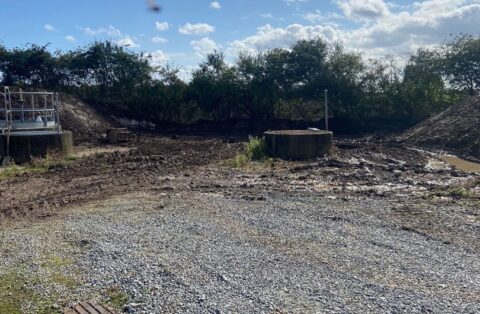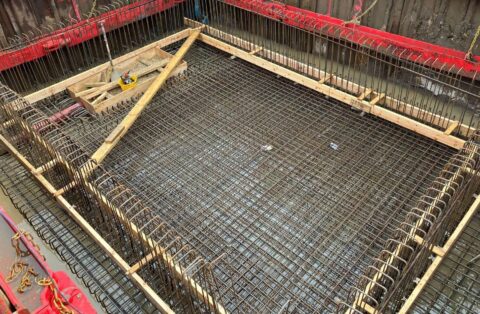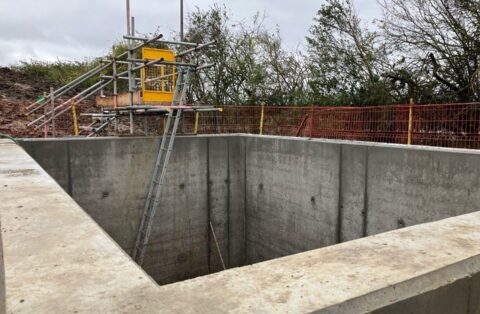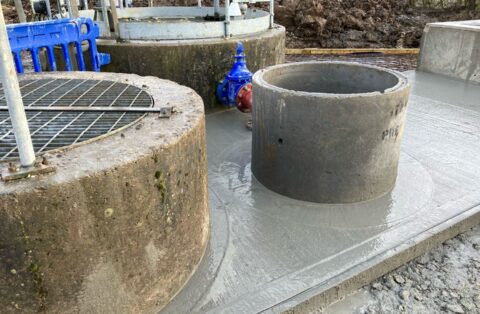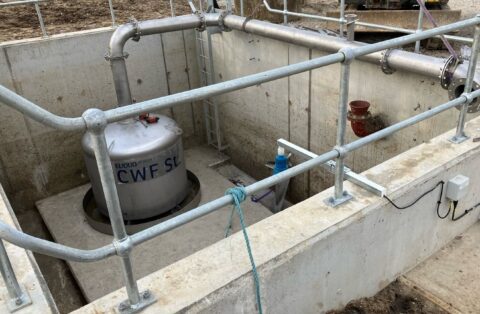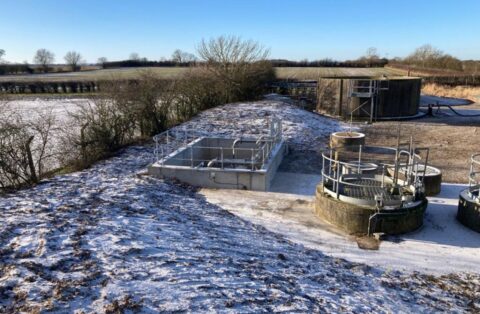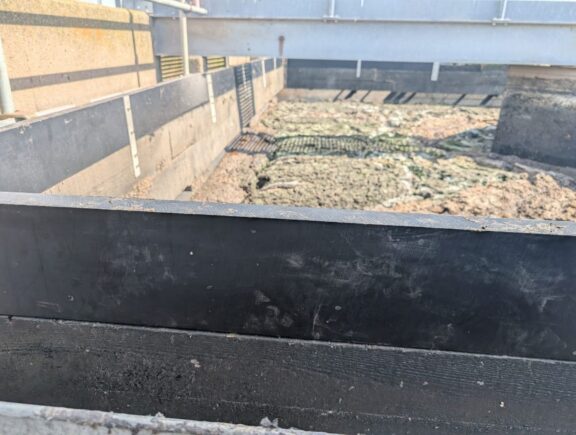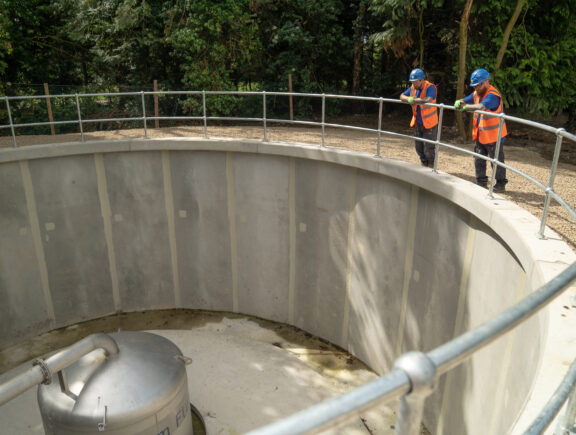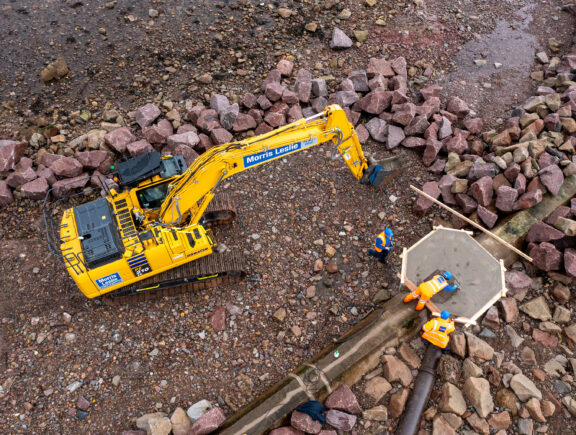The Sewage Treatment facility in the North of England required an additional 55m3 capacity in its main pumping station tank to comply with the new regulations.
Constructing a larger replacement tank would have been costly to the client, carbon-intensive and would have eliminated storm capacity for the duration of the programme. It was therefore agreed to construct a dedicated storm tank designed to integrate with the existing storage tank, to ensure no disruption to the treatment works and protect effluent quality throughout the programme.
The new reinforced concrete tank joined to the existing tank via an overflow pipe to allow storm water to be gravity fed into it. An overflow in the new tank enables stormwater to discharge into the treatment plant’s reed beds, and a low-level outlet pipe was installed so that remaining water in the tank could be gravity drained into a sump and back into the pump chamber for processing.
The new tank features a sustainable Eliquo Hydrok Controlled Water Flush (CWF) flushing bell; a non-powered, self-regulated method to clean sediment from storm tanks. The design, which utilises a siphon, automatically flushes stored water when the tank empties. It requires no power to run and eliminates the requirement for regular maintenance with jet-washers by operatives.
The non-powered, self-cleaning storm tank fills and drains hydraulically by gravity so requires little maintenance and power usage. Stonbury is pleased to have helped its client significantly reduce running costs and meet carbon reduction targets while increasing stormwater capacity to help protect local waterways for decades to come.

